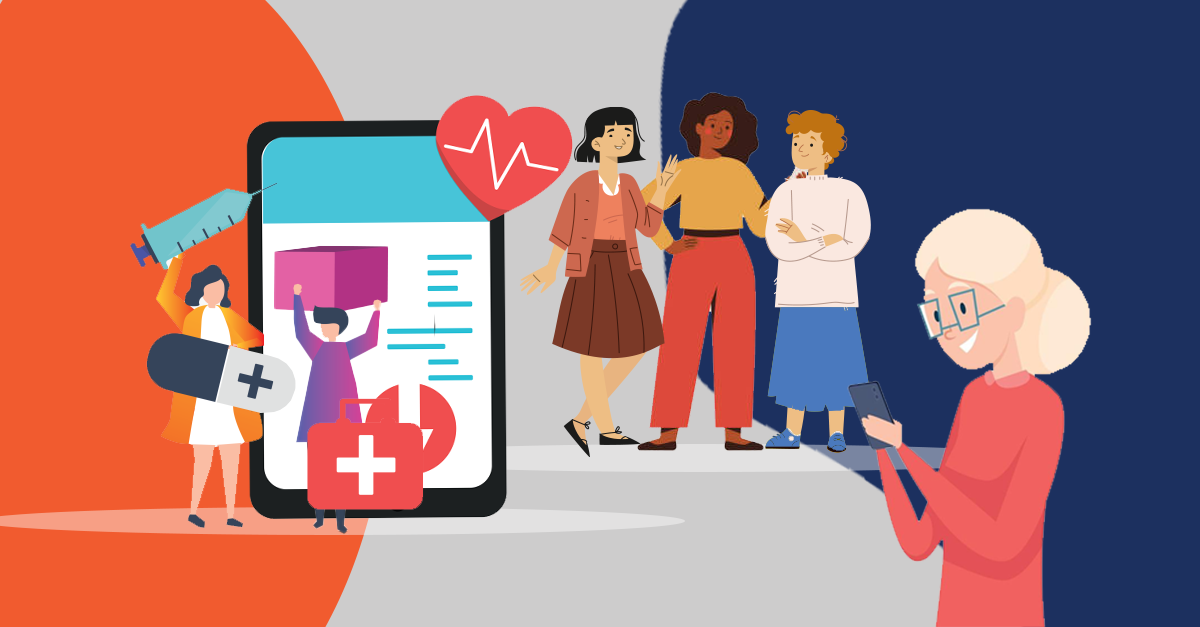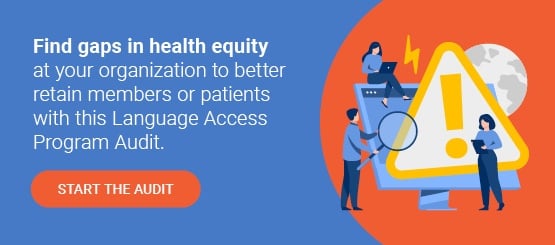Despite the progress made over the preceding decades, inequalities persist in many areas of American life, including healthcare. Disparities in both healthcare access and in outcomes like mortality, life expectancy, and burden of disease became even more notable during the pandemic. How can payers begin to close the gap?
To achieve health equity, healthcare has to be about more than simply paying providers to treat problems after they occur. Healthcare initiatives must be proactive to anticipate and mitigate health risks through the implementation of preventative care. Cultural engagement is a key element in effective preventative care. As a result, organizations concerned with equity must make language access and localization a priority. Here’s how language access and localization can improve health equity at each step of the member journey.
Cultural Engagement for Effective Outreach
Cultural engagement begins with culturally adapted marketing to attract and acquire new members. Language access must be integral to the entire experience so that members:
- Get collateral with invitations to join health plans, both in English as well as their native language.
- Receive contact support information, including a phone number where they can be immediately connected with someone who speaks their language.
- Find answers to all of their questions in their native language.
- Enroll in a membership plan that’s right for them.
Knowing the target audience and tailoring communication are key. Language preferences and ethnicity are just starting points: the more that’s known about the target audience, the more effectively their needs can be addressed.
For example, payers trying to reach elderly adults in multigenerational households need strategies to reach their grown children as well. In these households, the adult children help their parents navigate the healthcare system and have a significant amount of influence over their parents’ healthcare choices.
Culturally Adapted Communication for Existing Members
Post-acquisition, LSPs produce culturally adapted communication that payers can share throughout the onboarding process to familiarize new members with service offerings. When it comes to billing and other non-medical services, in-language call support gives members quick, easy access to the answers they need from teams they can trust.
Care coordination programs, for example, boost engagement in a healthcare setting by pairing interpreters with LEP patients. As part of these bilingual and multilingual call center services, each time a patient calls, they’ll get matched with an interpreter who speaks their language, which allows the patient to build trust and rapport over time. Organizations can then provide ongoing training to better equip call center staff with the tools they need to assist LEP patients. In turn, payers can satisfy, delight, and retain more members as they continue to grow.
Improving Health Literacy with Cultural Engagement
Additionally, different member demographics will have different healthcare concerns. Some of these concerns will be influenced by culturally relevant practices and beliefs. Effective preventative campaigns must take those practices and beliefs into account.
The most experienced LSPs will know how to translate, interpret, and localize content for specific subpopulations to address common cultural questions or concerns and dispel any misconceptions about healthcare procedures, treatments, or follow-up.
Data Collection
All of these initiatives have one thing in common: they require a deep understanding of the linguistic and cultural needs of the target audience. Without this insight, vulnerable populations will fall through the cracks, causing disparities in outcomes.
The success of any health equity initiative depends on accurate and thorough data collection. Where typical member surveys leave gaps, newly developed AI technology can fill in these gaps to obtain an accurate picture of a plan’s diverse member population.
Payers have long understood the importance of culturally adapted communication to health equity, but limited data kept true success just out of reach. Now, thanks to cutting-edge technology and strategic language access planning, they can take the next major leap forward in providing truly equitable healthcare for all.
How ULG Can Help
ULG has more than 35 years of experience in the healthcare industry. Our healthcare engagement solutions are tailored to improve health outcomes in culturally and linguistically diverse populations.
Ready to take your cultural engagement to the next level? Contact our Healthcare Outcomes Solutions Team for a free consultation!



